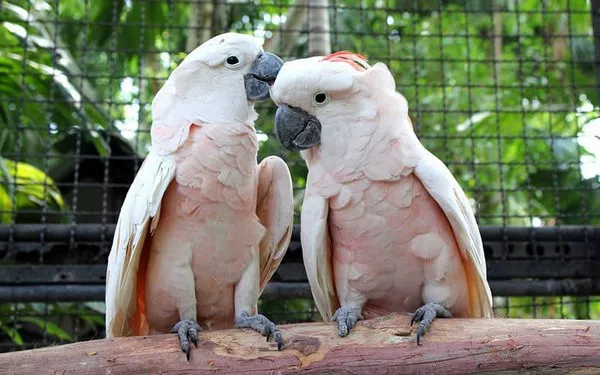When it comes to the captivating world of aquarium fish, few species have sparked as much fascination as the Betta fish. Known for their stunning colors and long, flowing fins, Bettas (Betta splendens) are a popular choice for aquarium enthusiasts. Among the various types of Bettas, the Halfmoon Betta stands out for its unique tail shape and vibrant hues. However, one of the common questions many potential Betta owners ask is: Are Halfmoon Bettas aggressive? In this article, we will explore the behavior of Halfmoon Bettas, including whether they are aggressive, what factors contribute to their temperament, and how to care for them effectively.
Understanding the Halfmoon Betta
To answer the question of whether Halfmoon Bettas are aggressive, it’s important to first understand what sets them apart from other Betta fish. The Halfmoon Betta is not a separate species but rather a variation of the Siamese fighting fish (Betta splendens). This variation is known for its dramatic, crescent-shaped tail, which is the hallmark of the “Halfmoon” name. The tail is so wide that it forms a perfect 180-degree angle, resembling a half-moon when fully spread.
Halfmoon Bettas come in a range of striking colors, from the classic blue, red, and purple to multi-colored combinations. Their vibrant colors, flowing fins, and elegant swimming patterns make them a favorite for aquarium hobbyists and collectors.
Despite their beauty, Halfmoon Bettas are often associated with aggressive behavior, particularly when they are housed with other fish. To understand why this is, we must delve into the natural instincts and behavioral tendencies of Bettas.
Aggression in Bettas: An Overview
The Betta fish, regardless of the tail shape or color, has a well-documented history of aggression. Betta fish, including the Halfmoon variety, are known for their territorial and combative nature. This behavior is deeply ingrained in their DNA, stemming from their origins in the wild.
In the wild, Betta fish are native to Southeast Asia, particularly in countries like Thailand, Cambodia, and Vietnam. They inhabit shallow, slow-moving waters such as rice paddies, ponds, and marshes. Male Bettas, including Halfmoon Bettas, are territorial and will defend their space aggressively. This territorial behavior is a survival mechanism—male Bettas fight off rivals to protect their food sources and mating grounds.
Male Bettas are particularly known for their aggression toward other males. This territorial instinct is amplified when they encounter another Betta, which they perceive as a threat. As a result, male Bettas often engage in physical combat with one another, using their sharp fins and aggression to assert dominance. This aggression can lead to serious injury or even death in the wild.
Are Halfmoon Bettas More Aggressive than Other Bettas?
Now that we understand the general aggressive tendencies of Betta fish, the question arises: Are Halfmoon Bettas more aggressive than other types of Betta fish? The simple answer is no, Halfmoon Bettas are not inherently more aggressive than other Betta types. They are part of the Betta splendens species, and their behavior is largely influenced by the same instincts that govern all Bettas.
That said, the Halfmoon tail shape can sometimes exaggerate the fish’s appearance, making them seem more aggressive in the eyes of other fish. The large, wide tail is a visually striking feature, which can sometimes provoke other males to behave more aggressively or make them feel threatened. However, this is more of a psychological factor related to how the fish appear to each other, rather than a unique aspect of the Halfmoon Betta’s nature.
In fact, aggression levels can vary from one individual Betta to another, regardless of their tail type. Factors like genetics, upbringing, and environment play a significant role in determining the temperament of each Betta fish.
Factors That Influence Betta Aggression
Several factors influence the aggression of Halfmoon Bettas, and understanding these can help you predict and manage their behavior in a tank setting. Here are the most important factors that contribute to Betta aggression:
1. Male vs. Male Aggression
The most common and well-known form of aggression in Betta fish is between males. When two male Bettas are placed in the same tank, they will often display aggressive behavior toward one another. This is because male Bettas see other males as rivals for territory and potential mates. Male Bettas, regardless of their tail type, will often flare their gill covers, puff up their bodies, and swim aggressively toward each other.
This behavior can escalate to full-blown fighting, where the Bettas may bite and nip at each other, causing serious damage. This is why it is strongly recommended not to house two male Bettas together, even if they are of different tail types like the Halfmoon.
2. Female Bettas and Male Bettas
While male-male aggression is the most well-documented, it is important to note that female Bettas can also display aggression, although to a lesser extent. In fact, female Bettas are more likely to live in groups called sororities, where multiple females can coexist peacefully. However, if a male Betta, like the Halfmoon, is introduced into the tank, it can trigger aggression from the females, especially if the male becomes too dominant.
In terms of breeding, male Bettas are typically aggressive toward females until they initiate a courtship display. This aggression is part of the mating ritual, but it can be stressful for the female. This behavior should be monitored closely to ensure that the female Betta is not harmed during the process.
3. Tank Size and Environment
The size and setup of the tank can also have a significant impact on Betta aggression. If a Betta, including a Halfmoon Betta, is kept in a small or overcrowded tank, it is more likely to become stressed and exhibit aggressive behavior. A larger tank with plenty of hiding spaces can help reduce aggression and provide the Betta with its own territory.
A well-decorated tank with plants, rocks, or artificial structures gives the Betta the opportunity to claim a space and reduce stress. The presence of mirrors or other reflective surfaces can provoke aggression, as Bettas will often mistake their reflection for another fish.
4. Diet and Health
A Betta’s diet and overall health can influence its temperament. Bettas that are underfed or stressed due to poor water conditions are more likely to become aggressive. Providing a high-quality, protein-rich diet can help keep Bettas healthy and reduce the likelihood of aggression caused by hunger or poor nutrition.
Additionally, Bettas that are sick or in pain may exhibit heightened aggression due to discomfort or stress. Always monitor the health of your Halfmoon Betta to ensure it remains peaceful and active.
5. Socialization with Other Species
Although Betta fish are known for their aggression toward other Betta males, their interactions with other species of fish depend on the specific tank mates. Some fish species can coexist peacefully with Bettas, while others may provoke aggression. It’s important to choose tank mates carefully to prevent fights.
Aggressive species, such as fin-nipping fish, should be avoided, as they can provoke a Betta to defend itself. On the other hand, peaceful fish such as Corydoras catfish or neon tetras can be good companions for a Betta, provided the tank is large enough to give each fish adequate space.
How to Reduce Aggression in Halfmoon Bettas
If you are concerned about the aggression of your Halfmoon Betta, there are several strategies you can employ to reduce aggression and provide a peaceful environment for your fish.
1. Provide a Spacious Tank
A larger tank allows your Betta to establish its own territory and avoid confrontations with other fish. A tank of at least 5 gallons is recommended for a single Betta, but larger tanks (10 gallons or more) are even better. A spacious tank also provides room for plants, decorations, and hiding spots that can help reduce stress.
2. Use a Tank Divider
If you need to keep multiple Bettas in the same tank, a tank divider can be used to separate the fish while still allowing them to see each other. This can help to reduce the chances of direct conflict while still providing the Bettas with a sense of their own space.
3. Limit Mirror Exposure
While mirrors can be used to entice Bettas into displaying their colors, prolonged exposure to mirrors can provoke aggression. Use mirrors sparingly and avoid placing them in the tank for extended periods of time.
4. Monitor Water Quality
Maintaining clean and stable water conditions is essential for keeping your Halfmoon Betta healthy and calm. Bettas are sensitive to water parameters such as temperature, pH, and ammonia levels. Make sure to perform regular water changes and keep the tank clean to prevent stress and illness.
5. Select Peaceful Tank Mates
As mentioned earlier, not all fish are compatible with Bettas. When selecting tank mates for your Halfmoon Betta, choose species that are peaceful and do not pose a threat to the Betta. Avoid brightly colored fish with long fins that may resemble another Betta and trigger aggression.
Conclusion
In conclusion, Halfmoon Bettas, like all Betta fish, can exhibit aggression, especially when housed with other males or in stressful conditions. However, their aggression is not unique to the Halfmoon variety—this behavior is characteristic of all Bettas due to their territorial instincts. By providing the right environment, maintaining good water quality, and carefully selecting tank mates, you can minimize aggression and create a peaceful setting for your Halfmoon Betta.
With the proper care, Halfmoon Bettas can thrive in a well-maintained tank, showing off their beauty and charm without the need for constant aggression. By understanding their behavior and needs, you can enjoy the stunning colors and grace of your Halfmoon Betta while minimizing stress and conflict.
Related Topics:






















